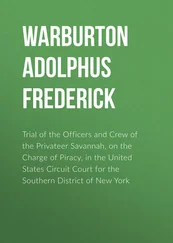Another supposed weakness is this: it may be thought particularly difficult to derive any respect for non-human life, any valuing of nature in general, from a purely secular, human approach. But it is worth noting that Robinson, for example, specifically includes among his “atheist’s values” a “love of all life” (Chapter 21; see also pp. 186–187). In fact there is no question of deriving a morality from the facts of the human situation. What we can do is to understand how moral thinking can develop and what functions it serves; and we can also understand how it naturally extends itself beyond a quasi-contractual system by the operation of what Hume called “sympathy.” [25] 14. See pp. 193–195 of Ethics: Inventing Right and Wrong , and the article mentioned in no. 4 above.
In contrast with any such real or supposed weaknesses in non-religious morality, we should note its distinctive merits, in particular its cultivation of a courageous realism in the face of the less palatable facts of life—and of death. But we need not dwell on this merit, since, as we have seen, it is dramatically recognized in Phillips’s attempt to take over, in the name of religion, the traditional non-believers’ attitude to the loss of one’s friends, the attitude of coming to terms with such loss without either denying it or suppressing it. The non-believer comes to terms with the inevitability of his own death in a similar way. Küng has likewise tried to take over in the name of religion the traditional non-believers’ view of morality itself: “We are responsible for our morality.” Robinson says that “The main irrationality of religion is preferring comfort to truth”(Chapter 14). Phillips and Küng are implicitly recognizing this traditional weakness in religion, and are proposing that religion should follow atheism in doing without it.
In Phillips, the moral take-over bid is linked with a strong tendency to disguise atheism on the theoretical side, and (Küng’s concept of God is so complex and so indeterminate that his position, too, may not be really so far removed from atheism. Should we then object to such take-overs? So long as the position adopted is, in substance, atheistic, what does it matter if it is called religion? After all, Epicurus was willing to postulate happy and immortal gods safely isolated from all contact with human affairs; Spinoza was willing to speak of Deus sive natura, identifying nature with God; and even Hume proposed a compromise:
The theist allows, that the original intelligence is very different from human reason: The atheist allows, that the original principle of order bears some remote analogy to it. Will you quarrel, Gentlemen, about the degrees, and enter into a controversy, which admits not of any precise meaning, nor consequently of any determination. [26] 15. Dialogues concerning Natural Religion , Part XII.
Today, however, it is more honest and less misleading to reject such compromises and evasions, which can too easily serve as a cover for the reintroduction of characteristically theistic views both on the intellectual and on the moral side.
Alternatively, is there any merit in Braithwaite’s approach, in retaining the religious “stories” as a psychological support for a morality, while explicitly rejecting any suggestion that they are factually true? This we might allow, provided that the morality they support is not of the kind we have been criticizing as distinctively religious. Apart from their other faults, such moralities have a tendency to be dangerously over-optimistic. Particularly in the field of international affairs, leaders who have too strong or too fundamentalist a faith may pursue policies which they know to be reckless, in the expectation that God will prevent the worst—and, for humanity, final-disasters. Such reliance would be quite different from the “fundamental trust” which Küng has reasonably advocated on purely human grounds. There are inevitable uncertainties in human affairs. Machiavelli speculated that “fortune is the ruler of one half of our actions, but… she allows the other half, or a little less, to be governed by us.” [27] 16. The Prince , Chapter 25.
Damon Runyon put it more briefly: “Nothing human is better than two to one.” If so, the only reasonable plan is to do the best we can, taking all possible precautions against the worst disasters, but then to meet the uncertainties with cheerful confidence. “Trust in God and keep your powder dry,” understood as Braithwaite might understand it, may be good practical advice. But to trust God to keep your powder dry for you is the height of folly.
MICHAEL SHERMER
Genesis Revisted
A Scientific Creation Story
It was a black day for fundamentalist Christianity when Dr. Michael Shermer stopped trying to believe in the impossible and became a convert to reason and objective investigation. His elegant contributions to the magazine Skeptical Inquirer have attracted a wide audience and his book Why Darwin Matters became an instant classic of scientific explanation.
Originally published in Darwin: A Norton Critical Edition , selected and edited by Philip Appleman (New York: W. W. Norton, 2001), 625–626.
To convey the logical absurdity of trying to squeeze the round peg of science into the square hole of religion, I penned the following scientific revision of the Genesis creation story. It is not intended as a sacrilege of the poetic beauty of Genesis; rather, it is a mere extension of what the creationists have already done to Genesis in their insistence that it be read not as mythic saga but as scientific prose. If Genesis were written in the language of modern science, it would read something like this.
In the beginning—specifically on October 23, 4004 B.C., at noon—out of quantum foam fluctuation God created the Big Bang, followed by cosmological inflation and an expanding universe. And darkness was upon the face of the deep, so He commanded hydrogen atoms (which He created from Quarks) to fuse and become helium atoms and in the process release energy in the form of light. And the light maker he called the sun, and the process He called fusion. And He saw the light was good because now He could see what he was doing, so he created Earth. And the evening and the morning were the first day.
And God said, Let there be lots of fusion light makers in the sky. Some of these fusion makers He grouped into collections He called galaxies, and these appeared to be millions and even billions of light years from Earth, which would mean that they were created before the first creation in 4004 B.C. This was confusing, so God created tired light, and the creation story was preserved. And created He many wondrous splendors such as Red Giants, White Dwarfs, Quasars, Pulsars, Supernova, Worm Holes, and even Black Holes out of which nothing can escape. But since God cannot be constrained by nothing, He created Hawking radiation through which information can escape from Black Holes. This made God even more tired than tired light, and the evening and the morning were the second day.
And God said, Let the waters under the heavens be gathered together unto one place, and let the continents drift apart by plate tectonics. He decreed sea floor spreading would create zones of emergence, and He caused subduction zones to build mountains and cause earthquakes. In weak points in the crust God created volcanic islands, where the next day He would place organisms that were similar to but different from their relatives on the continents, so that still later created creatures called humans would mistake them for evolved descendants created by adaptive radiation. And the evening and the morning were the third day.
Читать дальше












